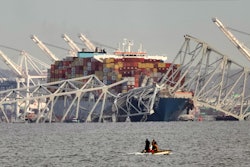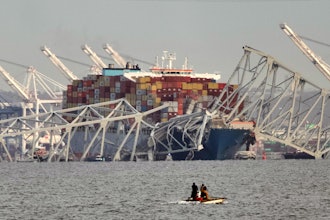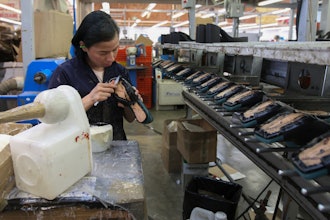The high-tech warehouse is taking shape as organizations seek to get ahead of the material handling systems challenges of the 21st Century supply chain. A big component of that formation is automation, but it has to be more strategic than just throwing machines at a problem.
Nearly three in four managers rank distribution center (DC) automation as the No. 1 way to increase productivity, according to a survey by Intermec Technologies. Customer demands to move more product faster through more channels combined with a shrinking labor pool have driven organizations to automate processes in their DCs.
Yet while many organizations have started automating, the parts don’t always add up to a holistic system. With nearly 3,000 hours lost each year to DC inefficiencies, Intermec reports, organizations can’t afford to have a single element out of sync.
Striving for Unity
Fragmented attempts to automate individual solutions is a step in the right direction, but what’s missing is a layer that coordinates all the pieces, communicates with the warehouse management system (WMS), provides high-level analysis of the operation, and keeps the entire DC working efficiently. This crucial layer is commonly known as a warehouse control system (WCS).
Because a WCS sits a layer above individual equipment, it can easily make adjustments throughout a warehouse system. It can modify automated storage and retrieval systems (AS/RS), conveyor speeds and sortation devices to create efficiencies that would be nearly impossible to achieve by adjusting each part individually.
Everything in a DC is based around the outbound vehicle schedule. A WCS simplifies planning because it views all of the equipment in the warehouse or DC as a single unit rather than a collection of components. It also can optimize gaps that inevitably occur between systems. You can then see how one adjustment will impact other parts of the system and adjust to ensure the product arrives in time to ship.
An overview of the entire material handling system lets managers easily see where adjustments, improvements and maintenance need to be performed.
Suppose there are four jams a day on conveyor 12. Each one chips away at your system’s productivity. Six in 10 managers say that large savings can be realized by recovering just seconds from the workday, Intermec reports.
With a WCS, all of the workflow information is captured into one database that turns raw data into useful information for consistent efficiency checks. The database also monitors for quick resolution to issues. As a result, you can make adjustments to reduce conveyor jams and plan for now and for the future — especially for the omni-channel phenomenon making headlines.
Coordinating All Moving Parts
Targeted analysis is particularly valuable for organizations that are either practicing or planning to move into omni-channel distribution. A WCS allows you to set up several types of fulfillment channels within the same facility by making the logistics of moving product more flexible.
For example, a shoe manufacturer that sells online and in stores can use an AS/RS to place cartons on a conveyor system. Based on information from the WCS, it will route those cartons to a packing station to fulfill quantities that make up less than a full case or may route the entire carton for a store replenishment outbound order. In the case of order quantities less than a full case, the pack station operator selects the proper quantity, and then the WCS routes the remainder to a relevant storage location.
The WCS coordinates operations and works with the WMS to ensure the manufacturer knows how many full cartons are available, how many pairs of shoes are in open cartons and where every item is located. This higher-level automation removes many of the complications involved with omni-channel distribution.
Every DC and fulfillment center has different priorities, so you also want to be sure the WCS you choose has enough flexibility to evolve with the changing marketplace.
A modular WCS will work better in most organizations than “one-size-fits-all” software. Modular approaches let you start small and build out as needed, keeping costs down while letting you focus on the areas with the best ROI. Or you can introduce it all at once — whatever works best for your needs.
In most supply chain organizations, the most glaring need is for visibility into how the operation is working. A WCS will allow you to view the operation end-to-end and better understand how the components fit into the whole, leading to an optimized flow.
When it comes to moving goods through a fulfillment center or DC to their final destinations, you can only go as fast as the slowest point. And if you don’t know where that point is, it will be incredibly difficult to meet your ever-escalating performance metrics and deliver customer satisfaction.
Although investing in automated equipment is a step in the right direction, you’ll never realize the full value of that investment if all that equipment runs independently. A WCS can help you align your entire material handling operation and keep all the components running smoothly.
Randy Marble is director of software solutions at Wynright Corporation, a wholly owned subsidiary of Daifuku Webb and a leading U.S.-based provider of intelligent material handling systems. With more than 200 engineers in-house, Wynright designs, manufactures, integrates and installs a full spectrum of intralogistics solutions, offering both Wynright-branded and third-party equipment to meet client needs. He can be reached at [email protected].






















